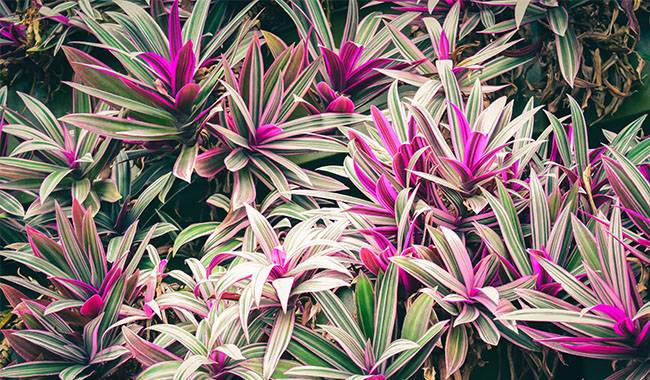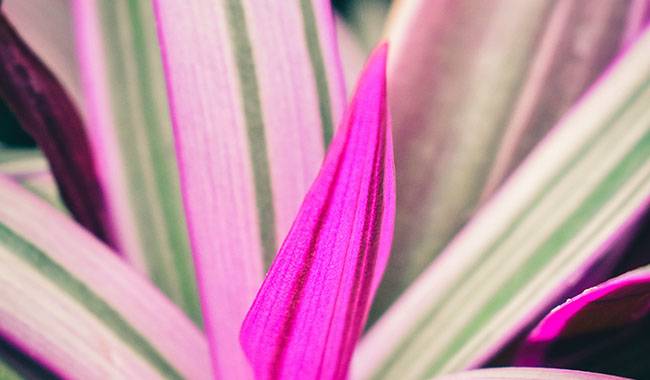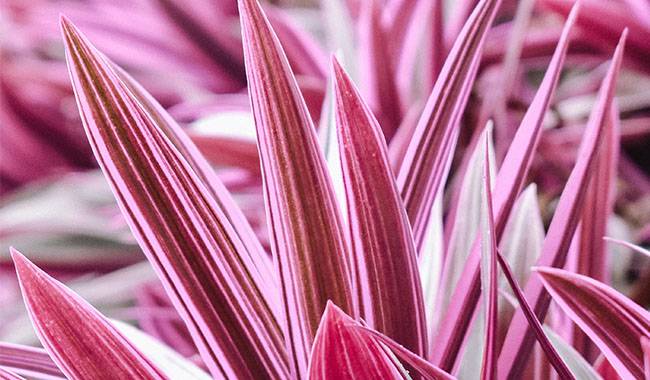
The closest competitor to the indoor Dracaena, the Cordyline plant is a brighter alternative to the indoor classics. Seduced by the rich pink and purple hues of its foliage, the heart-shaped tree is one of the most colorful indoor giants of the Cordyline plant. Sturdy, relatively undemanding, and always up-to-date, Cordyline plants blend easily into any interior. They require special care to remain compact and beautiful over the years. But they should not be seen as a very tricky crop. You will learn how to grow Cordyline plants in ThumbGarden’s article.
CORDYLINE PLANT DESCRIPTION
The Cordyline plant is the most colorful of the plants often mistaken for true palms. Many people confuse it with dicotyledons (both cultivated and cosmetic) and sometimes with magnolias, but the Cordyline plant differs from its competitors precisely in hue. This plant from the Asparagaceae family has long been classified as Cordyline, but today their classification seems to have finally been confirmed.
Although it can grow up to 40 inches (1 meter) tall even under indoor conditions, the Cordyline plant is rather compact and very elegant. All Cordyline plant plants are capable of producing shoots by producing stolons. These species include spreading, thin-stemmed forms that grow in clusters, and slender, erect specimens with strong shoots. cordyline plants have weakly expressed stems that become bare only with age.
Cordyline plants do not exceed 20 inches (50 cm) in length for many years. And the older they become, the prettier they look: the patterns on the leaves do not appear immediately, and the younger plants are rather unattractive. The fleshy, large, white in cross-section rhizomes are surprisingly cone-shaped tubers. The Cordyline plant can be distinguished from bamboo grass by the color of the roots and the presence of stolons, although these plants are not easily confused if you notice the different veining of the leaves.
Cordyline plants have broadly lance or sword-shaped, slightly wavy, glossy, sessile leaves that grow to 20 inches (50 cm) or longer. They are always decorated with white, red, pink, cherry, purple, and yellow stripes or spots. The patterns look striking in various basic light, medium, or dark green variations. Cordyline is known primarily for its rich reddish-purple hues.
TYPES OF INDOOR CORDYLINE PLANTS
Cordyline fruticosa, still more famous under its old name Cordyline terminalis, is most often cultivated indoors. The abundance of varieties, stemless stems, and compact structure are its main advantages. When choosing a shrub Cordyline plant, it is worth relying on your taste.
The best varieties include.
Cordyline lilliput.
Bolero Bicolor.
Cordyline Red edge.
Striped yellow-green “Kiwi” with a lavender border – Cordyline Kiwi.
Dark red with brighter young leaves – cordyline Tango.
Indoor cultivation also includes Cordyline Rubra, a compact species with irregular dark red, leathery, broadly lance-shaped leaves that widen in the middle.
Less common indoors are the palmate and more dull-colored species.
Cordyline australis (New Zealand cabbage tree) is a beautiful, panicle-like, heart-shaped plant with narrow, stiff, straight, lanceolate leaves.
Cordyline stricta is an elegant and tall species with short lance-shaped, light green leaves and slender, light-colored stems.
Cordyline banksii, a palm-shaped species with a slender trunk and very long, pendulous leaves with tips on long petioles.
Cordyline indivisa (Mountain cabbage tree) is a showy palm species with tall stems and frosted bright red centrally veined leaves in dense clumps.
GROWING CONDITIONS OF CORDYLINE PLANT INDOORS

Cordyline plant belongs to the category of conditional uncritical plants. It is difficult to grow these beautiful plants without diffuse soft lighting and stable temperature.
Lighting and placement
Cordyline plants do not like direct sunlight, only in spring and summer, and prefer bright places with soft light. In penumbra areas, colors fade, patterns partially disappear, and strong shadows are unacceptable.
Place the Cordyline plant near a light source in winter, preferably on a windowsill.
Temperature control and ventilation
Most indoor Cordyline plants are extremely heat-loving plants. For them, it is best not to let the air temperature drop even to 68 °F (20 °C) in summer and 64 °F (18 °C) in winter. Southern Cordyline plants will prefer overwintering temperatures similar to those of garden mulches – at 37-41 °F (3-5 °C), while straight Cordyline plants are around 50 °F (10 °C).
These Cordyline plants are not afraid of heat, especially if they can enjoy the fresh air. It is good for them to dry them out without excessive cooling, but it is not good to bring the plants into the garden. The plants should be additionally protected from all temperature changes and sudden changes.
TAKING CARE OF CORDYLINE PLANT AT HOME

Watering and air humidity are important for this fake palm tree. The quality of care directly affects the growth rate and the stems, so it is best not to let things go wrong.
Watering and air humidity
Cordyline plants do not tolerate a completely dry substrate. Moisture, especially if it stagnates in the lower part of the tray and substrate, is as destructive to them as it is to all houseplants. However, it is very important to keep the humidity constant. Allow the substrate to dry out only slightly between waterings. In winter, watering should be adjusted to the temperature.
Humidity is very important for Cordyline plants, and only subtropical species are quite well adapted to living rooms. Most cultivars of Cordyline plants grow normally and can keep their leaves intact only at high humidity. They are not fussy about methods of increasing humidity and are happy with anything that keeps it as high as possible. Cordyline plants can be sprayed frequently, or humidifiers can be installed.
Feed and Fertilizer Components
Cordyline plant-like plants require regular and fairly intensive fertilization. Fertilize even in winter, as often as once a month, halving the “summer” fertilization concentration. Fertilize every two weeks from spring to fall. Use only fertilizers specific for ornamental foliage plants.
Transplanting, containers, and substrates
It is best to transfer Cordyline plants to new containers only when needed – filling the substrate with roots – and only in early spring when the first signs of regrowth are present. Transplanting should be done while maintaining a submerged water level.
Classically stable pots with large drainage holes and a height greater than the width will suit growing Cordyline plants. Drainage is mandatory. Any universal substrate will do. Before planting, it is best to improve the soil with a loosener and a small amount of charcoal. A slightly acidic reaction is best, but the Cordyline plant grows well in neutral soil as well.
Pests and problems in cultivation
Cordyline plants are often infested with scabies and may suffer from spider mites and mealybugs. Improper care is indicated by foliage.
- Direct sunlight causes dry spots.
- Leaves dry out or turn brown in dry air.
- If the soil becomes dry frequently, brown spots will appear.
- Excessive watering will lead to rot.
- In the shade, the leaves will fall off.
- The leaves will curl and lose their luster in cold conditions.
Cordyline plant propagation
This amazing Cordyline plant can be propagated by cutting off side branches, rooting the buds, or taking multiple growing point cuttings of the stems. Rooting cuttings is not as easy as its relatives: shoots can only be rooted under greenhouse conditions in warm and consistently moist soil (lower heating and temperatures of 77-86 °F (25-30°C) are best).







